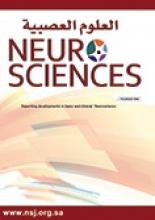Abstract
OBJECTIVE: To analyze the socio-demographic and clinical characteristics of admitted patients and the patterns of their service utilization over a decade from March 1988 to March 1998.
METHODS: Prospective data compilation using a structured questionnaire, hospital records and follow-up observations at King Fahd Hospital of the University in Al-Khobar, Kingdom of Saudi Arabia.
RESULTS: A total of 1366 patients (683 of each sex) had 2217 admissions in 10 years. By the International Classification of Diseases, 10th edition criteria, 19.5% had schizophrenia, 15.2% bipolar disorder, 9.9% depressive episodes, 8.6% acute and transient psychotic disorders, 7.7% adjustment disorders and 7.6% dissociative disorders. Males were more frequently admitted for schizophrenia and females for mood and anxiety disorders. Most non-Arab expatriates were diagnosed as acute and transient psychotic, stress-related or dissociative disorders. Re-hospitalizations constituted 28% of all admissions. The mean length of stay was 25 days per admission and 41 days per patient. The overall bed occupancy rate was 84.9%. A subgroup of 16.9% of patients, mostly with schizophrenia or bipolar disorder, consumed 62.3% of the bed occupancy.
CONCLUSION: Gender and immigration were the main determinants of variance in patient characteristics, nosological distribution and pattern of service use. More beds are needed. Psycho-educational programs should be intensified to reduce the social stigma and societal intolerance to mental patients. Active family involvement improves compliance and might reduce re-hospitalization rates. Heavy service consumers should be transferred to long-stay facilities.
- Copyright: © Neurosciences
Neurosciences is an Open Access journal and articles published are distributed under the terms of the Creative Commons Attribution-NonCommercial License (CC BY-NC). Readers may copy, distribute, and display the work for non-commercial purposes with the proper citation of the original work.






